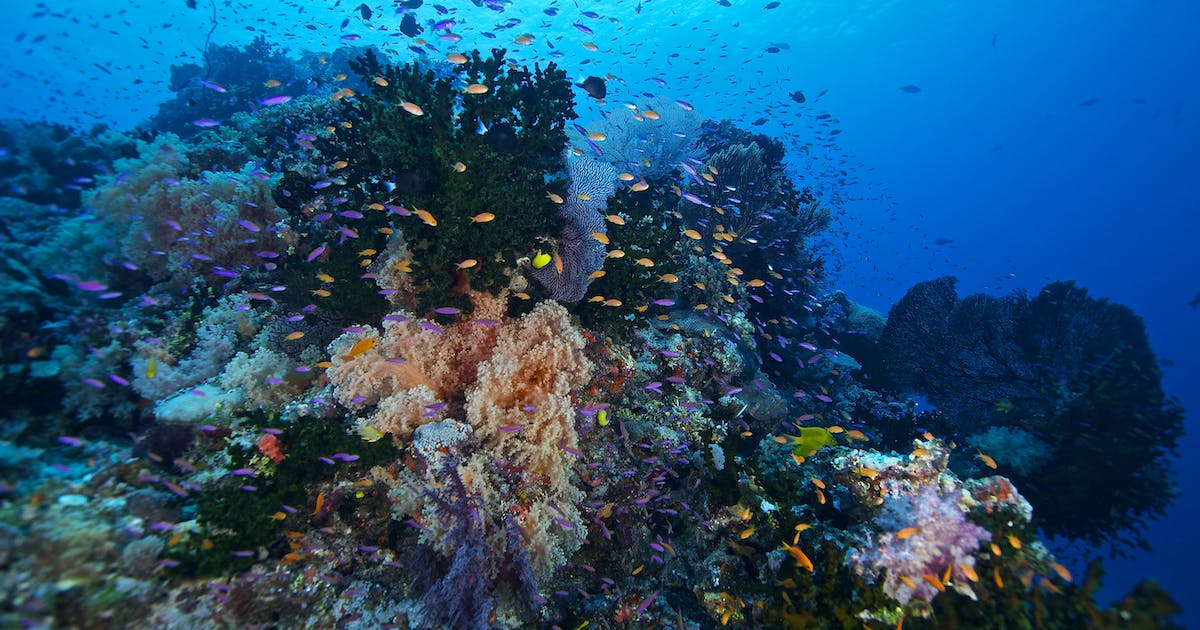The Blue Nature Alliance, a group of international conservation organizations, philanthropists and governments, is on a mission to advance the conservation of 18 million square kilometers (7 million square miles) of ocean — an area twice the size of the continental United States — over the next five years.
To date, less than 10 percent of the world’s oceans are protected. The Alliance, which aims to help double the current amount of ocean area under conservation, could help secure a healthier future for the world’s oceans — and protect the lives and jobs of billions of people in the process, explained ‘Aulani Wilhelm, senior vice president of oceans at Conservation International, which is helping to lead the Blue Nature Alliance.
“Given what the world is up against, we must protect as much of the ocean as we can, as fast as we can,” Wilhelm said. “That means advancing new models of conservation in partnership with communities, governments and the private sector to change the way we value our oceans and all they provide for humanity.”
The Blue Nature Alliance supports the global push to expand protection to 30 percent of the ocean by 2030 — which scientists say is necessary to limit the impacts of climate change on our oceans and prevent the widespread extinction of marine species.
Working alongside local communities, governments, Indigenous peoples and ocean experts, the Alliance has already engaged in advancing the conservation of more than 4.8 million square kilometers (1.9 million square miles) of ocean across Fiji, Antarctica’s Southern Ocean and Tristan da Cunha — the most remote inhabited archipelago in the world. In each of these places, the Alliance collaborates with communities and governments to identify their conservation goals and help implement strategies to achieve them. These efforts build on lessons from established, well-functioning marine protected areas such as the Papahānaumokuākea Marine National Monument in Hawai’i.
For example, in Tristan Da Cunha, the government recently committed to protecting roughly 700,000 square kilometers (270,000 miles) of ocean — closing off 90 percent of its territorial waters to all human activity. The remaining 10 percent is set aside as a sustainable fishing area for the island’s 260 residents, who own and operate a small lobster fishery certified by the Marine Stewardship Council. Through the Blue Nature Alliance, Conservation International provided critical funding and technical expertise that enabled this area to be protected at twice the size it would have been otherwise.
The next phase of the Alliance will engage in Canada, Seychelles, Palau and the Western Indian Ocean, with the aim of strengthening and enhancing the protection of nearly 2 million square kilometers (734,000 square miles) of ocean. In Canada, Conservation International and non-profit Oceans North are already working with the Inuit, Indigenous and coastal communities to support the establishment of Indigenous-led marine protected areas.
“Science tells us that humanity can avoid many of the most severe climate consequences by expanding how much ocean area we protect and reducing the pressure we put on marine ecosystems and fish — but only if we do it quickly,” Wilhelm said.
“We must collaborate at every level and ensure the way we work in partnership with local communities, governments and Indigenous peoples is fair and just, to advance shared priorities. Island communities like Tristan da Cunha continue to take courageous actions in service of humanity and the planet. We hope their example inspires others.”
The Blue Nature Alliance is a collaboration led by Conservation International, The Pew Charitable Trusts, the Global Environment Facility, Minderoo Foundation, and the Rob and Melani Walton Foundation.

